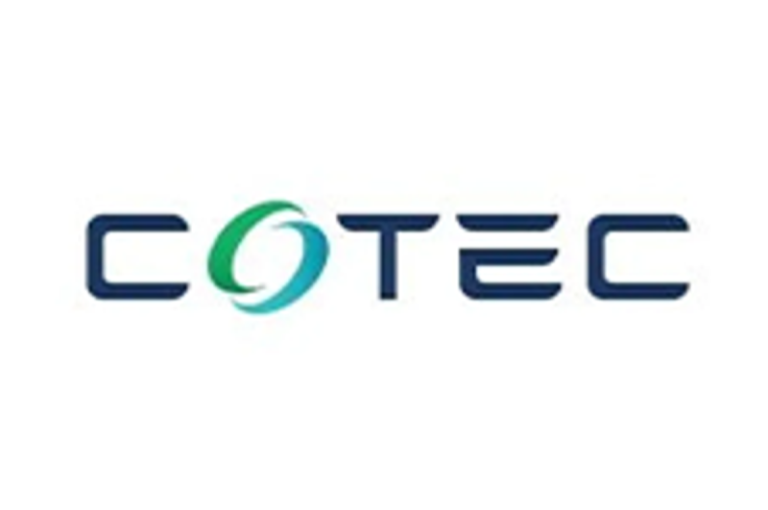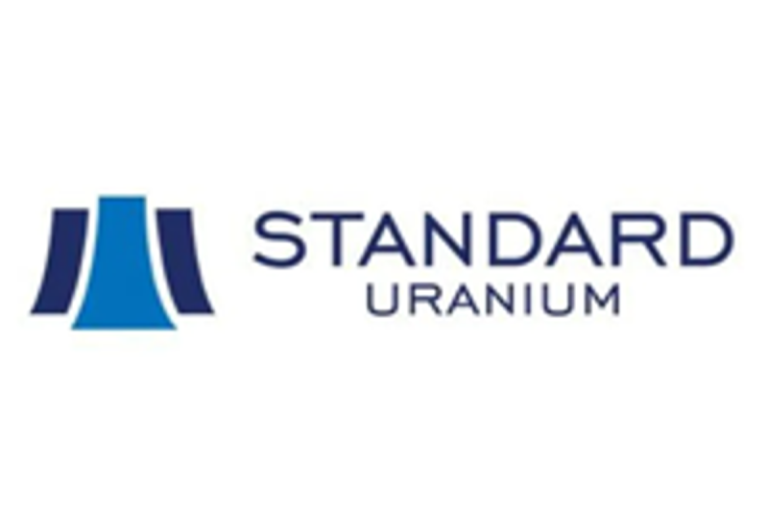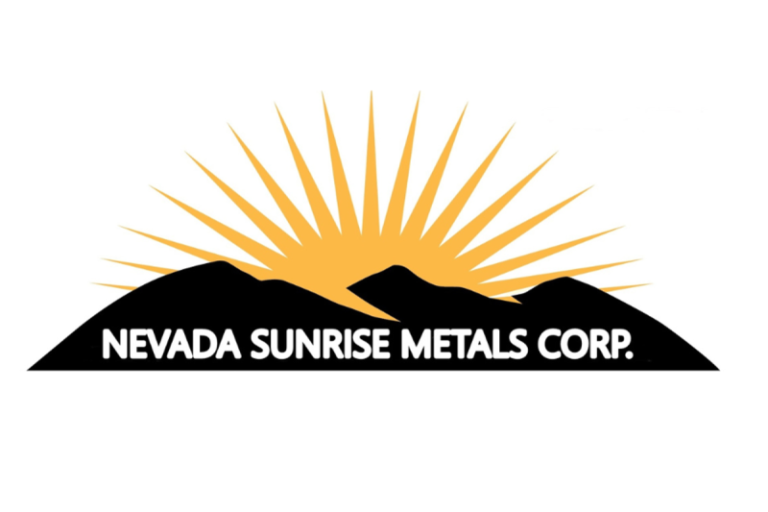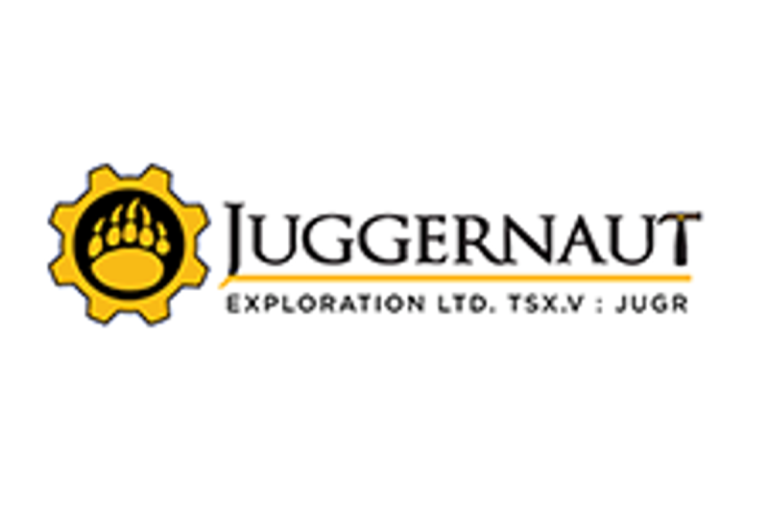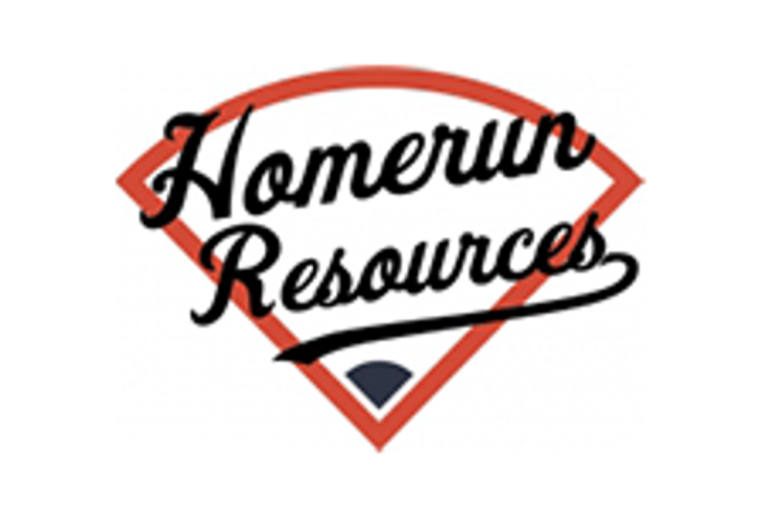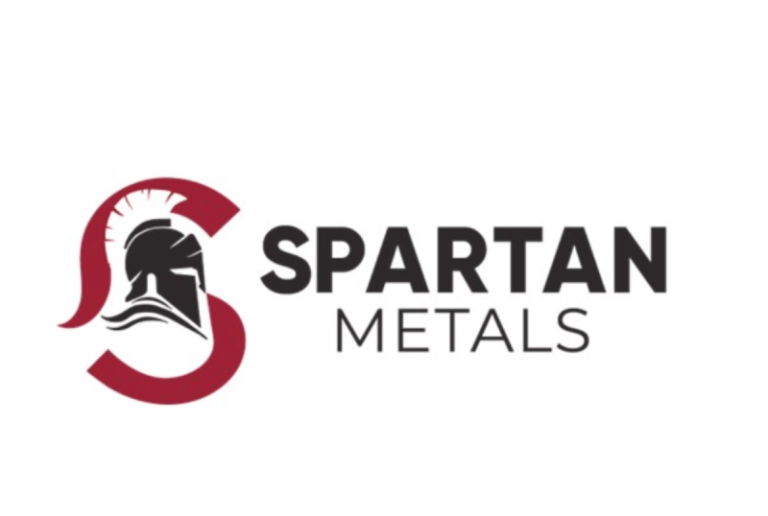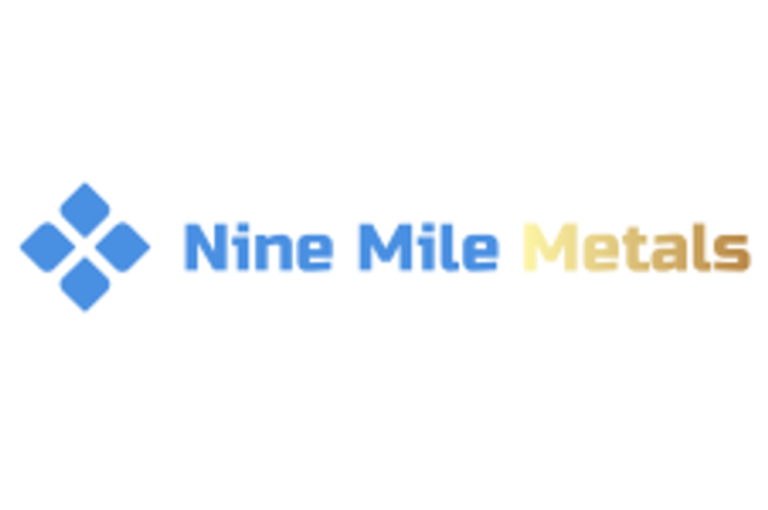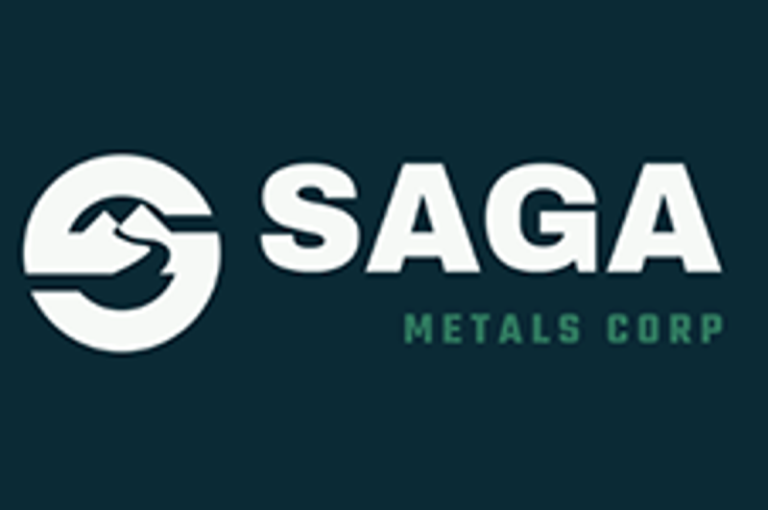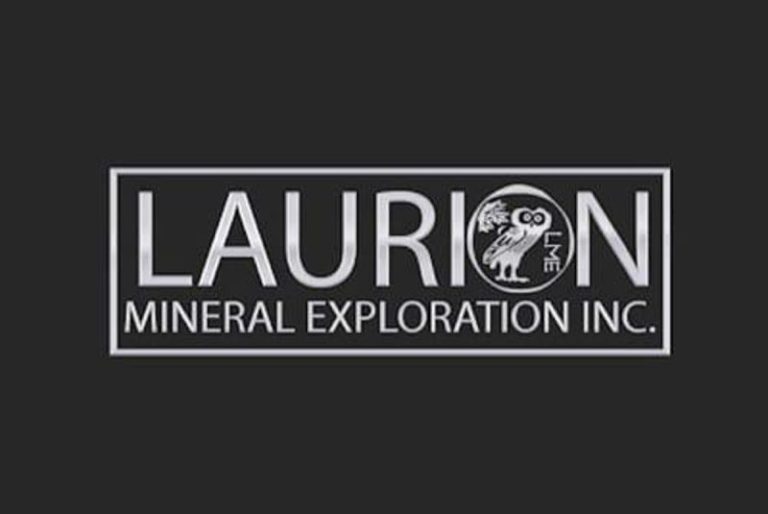(TheNewswire)
Vancouver, Canada, December 18, 2025 TheNewswire – Spartan Metals Corp. (‘Spartan’ or the ‘Company’) (TSX-V: W | OTCQB: SPRMF | FSE: J03) is pleased to announce assay results from the drilling program at the Tungstonia Tailings deposit, which is part of the company’s 100% owned Eagle Tungsten-Silver-Rubidium Project (‘Eagle’ or ‘Project’) in eastern Nevada. The program consisted of 34 ~6.4-centimeter (2.5 inch) holes at approximate 12 meter (m) spacing totaling ~67 (m) comprising 133 samples with an average depth of near 2 m aligned with pre-drilling estimates of the tailings thickness.
Highlights:
|
Hole ID
|
From (m)*
|
To (m)*
|
Interval (m)*
|
WO3%**
|
Ag (g/t)
|
Rb (ppm)
|
|
Tails-2509
|
0.00
|
0.46
|
0.46
|
0.20
|
8.0
|
563
|
|
0.46
|
0.91
|
0.46
|
0.24
|
6.3
|
886
|
|
Tails-2512
|
0.00
|
0.46
|
0.46
|
0.28
|
7.2
|
655
|
|
0.46
|
0.91
|
0.46
|
0.20
|
7.9
|
732
|
|
0.91
|
1.52
|
0.61
|
0.20
|
7.1
|
498
|
|
Tails-2519
|
0.00
|
0.46
|
0.46
|
0.21
|
8.2
|
686
|
|
0.46
|
0.91
|
0.46
|
0.23
|
8.0
|
615
|
|
0.91
|
1.52
|
0.61
|
0.22
|
6.2
|
488
|
|
Tails-2522
|
0.46
|
0.91
|
0.46
|
0.14
|
8.0
|
1,186
|
|
Tails-2526
|
0.91
|
1.52
|
0.61
|
0.30
|
95.4
|
246
|
|
1.52
|
1.98
|
0.46
|
0.42
|
123
|
182
|
|
1.98
|
2.44
|
0.46
|
0.21
|
19.1
|
1,181
|
* – holes were drilled in feet and converted to meters, intervals may not sum due to rounding.
** – tungsten was assayed as W ppm, converted W%, and then to WO3% using 1.261 conversion factor
Brett Marsh, Spartan’s President and CEO, states, ‘These positive assay results support our belief that the legacy Tungstonia tailings can be an important part of Spartan’s current objectives and could potentially contribute to the US tungsten and rubidium supply chain. We anticipate receiving metallurgical results from this program within the next couple of months that will help us better understand the economic potential we have in our readily accessible tailings and waste rock.’
Rebecca Ball, Spartan’s Vice President of Exploration, states, ‘Coming from a military family, I believe it is crucial to have a strong domestic critical metal supply chain. These tungsten and rubidium results may provide a new nationally significant presence of critical defense metals and potentially bring us closer to helping the US onshore it’s critical metal sources and decrease our reliance on foreign imports. I respect our military service members, and I am proud to be able to potentially help provide the US with resources that contribute to the security of those who serve and protect the USA.’
34 holes (Figures 1 to 3) were advanced vertically into the legacy tailings using a truck mounted auto hammer equipped hollow stem auger rig – the auger was not required because the coarse sand sized tail material is well compacted and the auto hammer advanced well and returned high quality samples. Each hole was advanced through the entirety of the tailings until native ground was encountered. Recovery was excellent at near 100% for all collected samples, representative images are shown in Figures 4 to 6. Samples were collected at 0.46 m (1.5 ft) and 0.61 m (2 ft) intervals from surface using 6.4-centimeter (2.5-inch) California split spoon tube sampler equipped with sand catcher. The full sample was placed into 11’x17′ Nano-Por Geological sample bags, sealed, and delivered to American Assay Lab (AAL) in Reno, Nevada for assay with representative material saved in chip trays for preservation. Field duplicates were obtained by splitting the sample into two equal portions and following the same procedures as full samples.
Sample intervals are considered true thicknesses as the tails were deposited horizontally and internal layering observed in the samples was effectively perpendicular to the vertical sample direction.
Significance of Assay Results
The weighted average tungsten results of 0.13% WO3 from all 133 samples is near cutoff for currently operating mines with the Almonty, Sangdong mine cutoff in South Korea reported at 0.15% WO3 (1). If the 0.15% WO3 cutoff from Sangdong – an underground mine – is applied, the weighted average of the 41 resulting samples is 0.20% WO3. The potential addition of silver and rubidium credits makes these results very encouraging and since the tailings have already been mined, transported, and processed, it is likely that a potential economic cutoff could be closer to the average of 0.13% WO3 obtained from the weighted average of all samples in this program.
Next Steps
Spartan will continue execution of the entire Phase 1 of the recommended work program from Spartan’s July 31, 2025, NI 43-101 Technical Report which is the characterization of the Tungstonia tailings that will be focused on metallurgical analysis, definition the overall geometry for tonnage calculations, 3D modeling, quantitative assessment, resource estimation, and economic evaluation to definitively determine economic viability and associated cutoff grades and there is no guarantee of economic viability.
Two holes drilled as twins of Tails-2519 and Tails-2527 were sampled in their entirety and delivered to McClelland Labs, Reno, Nevada for geological and metallurgical testing. The analyses are intended to identify the minerals that host tungsten and rubidium and understand recoverability using gravity and various leaching scenarios and will include:
-
QEMSCAN mineralogical identification,
-
Whole rock geochemical analysis,
-
Acid leach tests (Rb and W),
-
Sulfide flotation tests (Ag potentially in galena),
-
Mica flotation for Rb,
-
Detailed gravity concentration testing.
Spartan is currently developing the geometry and 3D models to be used as input for the initial resource estimate and economic evaluation with anticipated completion in early 2026.
Click Image To View Full Size
Figure 1 Plan map of Tungstonia Tailings drill holes.
Click Image To View Full Size
Figure 2 A – A’ cross section through tailings showing tungsten (drill traces) and silver (line graph) grades.
Click Image To View Full Size
Figure 3 B – B’ long section showing tungsten (drill traces) and silver (line graph) grades.
Click Image To View Full Size
Figure 4 Sample from hole Tails-2526 from 1.52 m – 1.98 m. Note excellent recovery and prevalence of sulphide minerals that contained 0.42 % WO3, 123 g/t Ag, 182 ppm Rb, 1044 ppm Bi, 0.67% Pb, and 0.12% Zn
Click Image To View Full Size
Figure 5 Sample from hole Tails-2512 from 0 m to 1.46 m. Note excellent recovery from surface with typical brownish orange color. Interval contains 0.28% WO3, 7.2 g/t Ag, and 654 ppm Rb.
Click Image To View Full Size
Figure 6 Sample from hole Tails-2522 from 0.46 m to 0.91 m. Note excellent recovery comprised of coarse sand and fine clay. Interval contains 0.14% WO3, 8.0 g/t Ag, and 1,186 ppm Rb
QA/QC Procedures
Samples were submitted to American Assay Lab (AAL) of Sparks, Nevada, which is a certified and accredited laboratory, independent of the Company. Samples are prepared using industry standard-prep methods and analyzed using method IM-4AB61 (61 element suite: 0.5g 4-acid plus boric acid hot block, ICP-OES+MS) plus IM-4ABEx ICP-MS for over limit Rb and G-FAAuAg – 30g gravimetric fire assay for overlimit Ag. AAL undertakes its own internal coarse and pulp duplicate analysis to ensure proper sample preparation and equipment calibration. Spartan’s QAQC includes regular insertion of CRM standards, duplicates, and blanks with a stringent review of results completed by the Company’s Qualified Person, Brett R. Marsh, President and CEO of Spartan Metals.
About The Eagle Project
The Eagle Project presents a unique opportunity to delineate one of the largest and highest-grade Tungsten (‘W’) and Rubidium (‘Rb’) districts in the United States. The Project consists of the past-producing high-grade Tungstonia and Rees/Antelope tungsten (W-Cu-Ag) mines. Operations at these mines were from 1915 to 1942 with intermittent small-scale production occurring until 1956. Tungsten production from these two mines totaled 8,379 units at grades between 0.6%-0.9% WO3 (2).
The Project is ~36.5 km² in size and located approximately 120 kilometers northeast of the town of Ely, in the Kern Mountains of White Pine County, Nevada. The Project covers 9,033 acres consisting of 445 Bureau of Land Management (BLM) unpatented lode mining claims.
Three deposit types are present at Eagle; Porphyry, Skarn, and Carbonate Replacement (CRD) that contain significant or anomalous grades of Tungsten (W), Silver (Ag), and Rubidium (Rb) plus Cu-Sb±Au-Pb-Zn-Bi-As across three project focus areas that also includes the potential to recover W-Rb-Ag from the legacy Tungstonia Mill Tailings.
-
(2)Nevada Bureau of Mines and Geology (1988), Bulletin 105 p213-217
The technical information contained in this news release has been prepared under the supervision of, and approved by Brett R. Marsh, CPG. Mr. Marsh is President and CEO of Spartan Metals Corp. and a ‘qualified person’ as defined under National Instrument 43-101 – Standards of Disclosure for Mineral Projects.
About Spartan Metals Corp.
Spartan Metals is focused on developing critical minerals projects in well-established and stable mining jurisdictions in the Western United States, with an emphasis on building a portfolio of diverse strategic defense minerals such as Tungsten, Rubidium, Antimony, Bismuth, and Arsenic.
Spartan’s flagship project is the Eagle Project in eastern Nevada that consists of one of the highest-grade historic tungsten resources in the USA (the past-producing Tungstonia Mine) along with significant under-defined resources consisting of: rubidium; antimony; bismuth; indium; as well as precious and base metals. More information about Spartan Metals can be found at www.SpartanMetals.com
On behalf of the Board of Spartan
‘Brett Marsh’
President, CEO & Director
Further Information:
Brett Marsh, M.Sc., MBA, CPG
President, CEO & Director
1-888-535-0325
info@spartanmetals.com
Neither the TSX Venture Exchange nor its Regulation Service Provider (as that term is defined in the policies of the TSX Venture Exchange) accepts responsibility for the adequacy or accuracy of this press release
Forward Looking Statements
This news release contains statements that constitute ‘forward-looking statements.’ Such forward looking statements involve known and unknown risks, uncertainties and other factors that may cause the Company’s actual results, performance or achievements, or developments in the industry to differ materially from the anticipated results, performance or achievements expressed or implied by such forward-looking statements. Forward-looking statements are statements that are not historical facts and are generally, but not always, identified by the words ‘expects,’ ‘plans,’ ‘anticipates,’ ‘believes,’ ‘intends,’ ‘estimates,’ ‘projects,’ ‘potential’ and similar expressions, or that events or conditions ‘will,’ ‘would,’ ‘may,’ ‘could’ or ‘should’ occur. Forward-Looking Information in this news release, Spartan has applied several material assumptions, including, but not limited to, assumptions that: the current objectives concerning the Company’s projects can be achieved and that its other corporate activities will proceed as expected; that general business and economic conditions will not change in a materially adverse manner; and that all requisite information will be available in a timely manner.
Although the Company believes the forward-looking information contained in this news release is reasonable based on information available on the date hereof, by their nature forward-looking statements involve known and unknown risks, uncertainties and other factors which may cause our actual results, performance or achievements, or other future events, to be materially different from any future results, performance or achievements expressed or implied by such forward-looking statements. By their nature, these statements involve a variety of assumptions, known and unknown risks and uncertainties and other factors, which may cause actual results, levels of activity and achievements to differ materially from those expressed or implied by such statements.
Examples of such assumptions, risks and uncertainties include, without limitation, assumptions, risks and uncertainties associated with general economic conditions; adverse industry events; future legislative and regulatory developments; the Company’s ability to access sufficient capital from internal and external sources, and/or inability to access sufficient capital on favorable terms; the ability of the Company to implement its business strategies; competition; the ability of the Company to obtain and retain all applicable regulatory and other approvals and other assumptions, risks and uncertainties.
THE FORWARD-LOOKING INFORMATION CONTAINED IN THIS NEWS RELEASE REPRESENTS THE EXPECTATIONS OF THE COMPANY AS OF THE DATE OF THIS NEWS RELEASE AND, ACCORDINGLY, IS SUBJECT TO CHANGE AFTER SUCH DATE. READERS SHOULD NOT PLACE UNDUE IMPORTANCE ON FORWARD-LOOKING INFORMATION AND SHOULD NOT RELY UPON THIS INFORMATION AS OF ANY OTHER DATE. WHILE THE COMPANY MAY ELECT TO, IT DOES NOT UNDERTAKE TO UPDATE THIS INFORMATION AT ANY PARTICULAR TIME EXCEPT AS REQUIRED IN ACCORDANCE WITH APPLICABLE LAWS.
Copyright (c) 2025 TheNewswire – All rights reserved.

